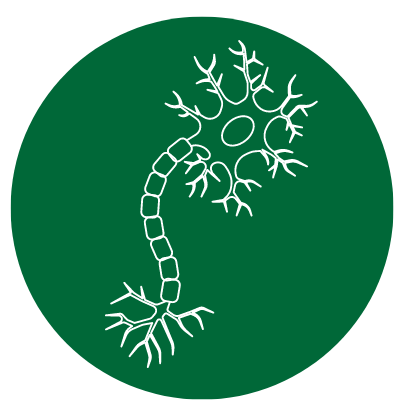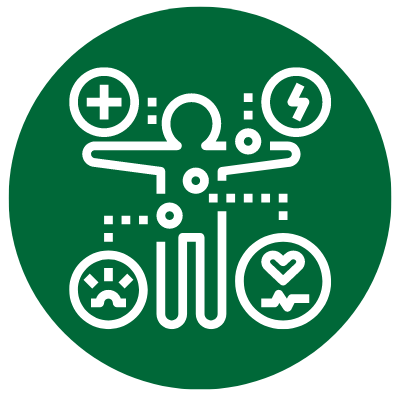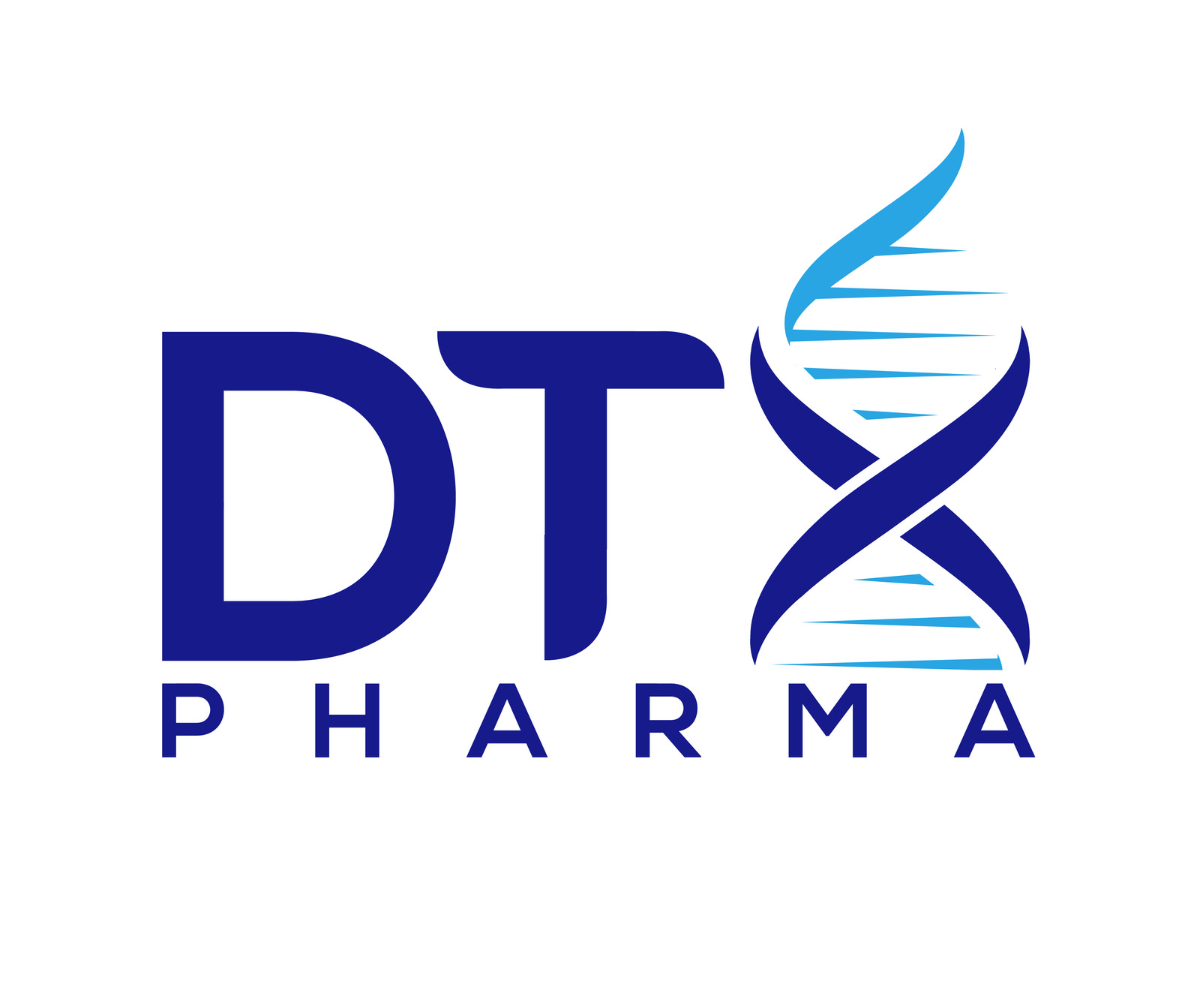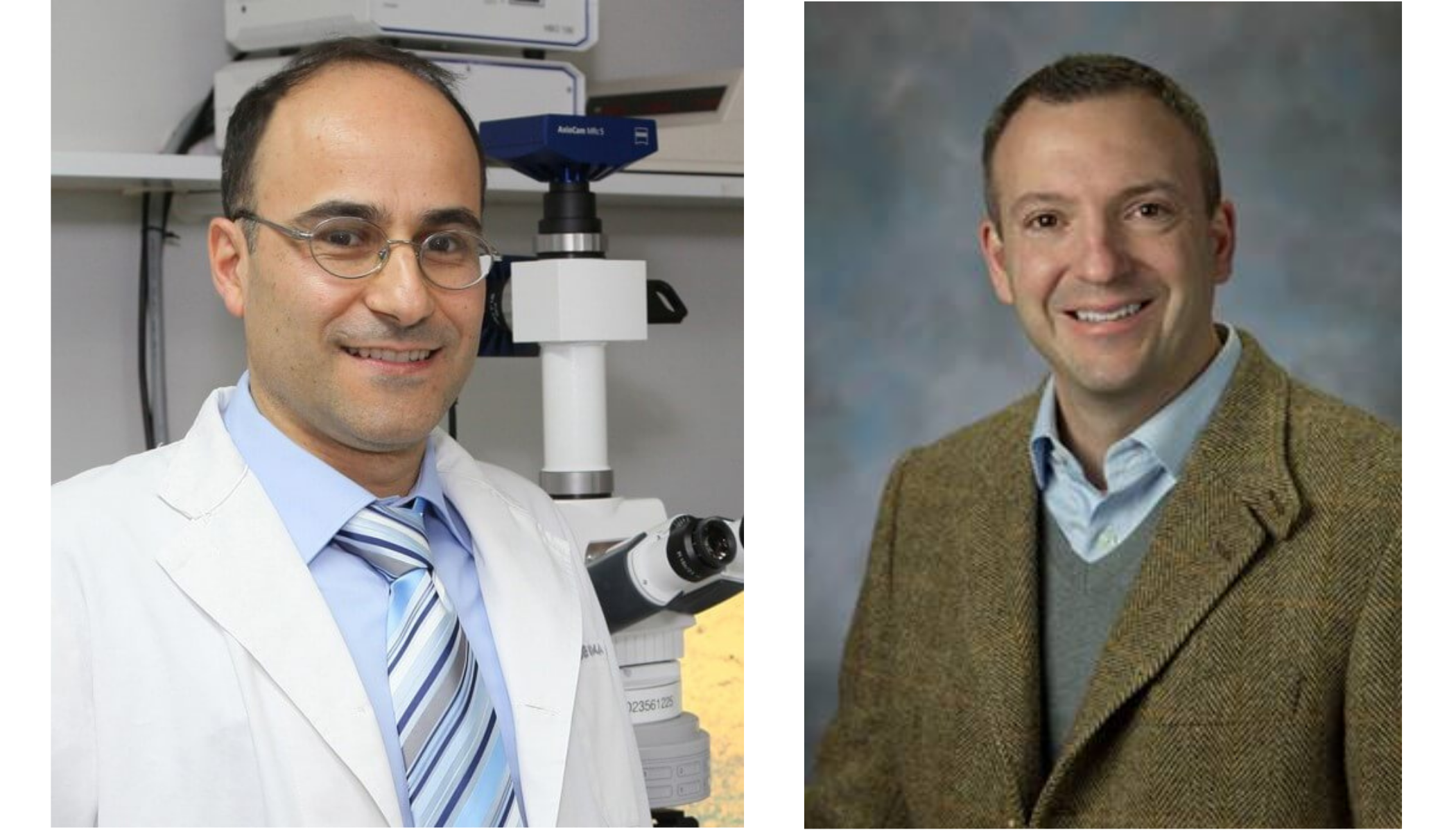Gene Therapy
Charcot-Marie-Tooth is influenced significantly by genetics with over 100 genes directly involved in its development. There are three inheritance patterns for gene mutations in CMT: autosomal dominant (one copy of a defective gene is enough to cause the disease), autosomal recessive (requires two copies of a defective gene to cause the disease), and X-linked (The mutation is in a gene on the X chromosome, meaning males and females have a different number of copies of the defective gene) . More than half of CMT cases result from a duplication of the PMP22 gene, affecting the function of peripheral nerves and causing typical CMT symptoms.

Gene therapy is a technique aiming to modify or control gene expression to treat or cure diseases. For CMT, gene therapy can correct genetic mutations by replacing, adding, silencing, or modifying affected genes. This approach has succeeded in treating other genetic diseases like Spinal Muscular Atrophy. Targeting these mutations with gene therapy is a potential treatment for many CMT subtypes.
Potential Benefits of Gene Therapy for CMT
Correcting Genetic Mutations

Aims to cure or significantly improve symptoms by modifying affected genes.
Targeting Pathways

Can target specific disease pathways to improve symptoms and non-disease-specific pathways that may benefit all CMT types.
Long-Term Effects

Targets the underlying genetic cause for potential long-term effects instead of just treating symptoms.
Synergy With Other Therapies

Can be combined with other treatments for more comprehensive and effective CMT therapy.
Here is a list of genetic-based research projects that have already been funded by CMTRF:


Nationwide Children’s Hospital’s Afrooz Rashnonejad: Developing Improved Gene Therapy Delivery Vehicles for Several Types of CMT
The development of safe and effective gene therapies for CMT requires the delivery of the therapeutic genetic payload into the peripheral nervous system, specifically targeting Schwann cells for certain CMT types, including but not limited to CMT1A, 1B, 4C, 4J, and 1X. Special carriers called adeno-associated viral (AAV) vectors currently serve as the major delivery method for gene therapies. Dr. Afrooz Rashnonejad, PhD, a principal investigator in the Center for Gene Therapy in the Abigail Wexner Research Institute at Nationwide Children’s will work to develop new AAV-based (adeno-associated viral) vehicles for delivering gene therapies more efficiently into the Schwann cells. This will improve treatment efficacy and safety of gene therapies for several types of CMT, including the most prevalent form, CMT1A.

ReviR Therapeutics – Small Molecule Splice Modulator for CMT1A
ReviR Therapeutics is developing a class of drugs called small molecule splice modulators, which can regulate the expression of a gene by influencing which components of the genetic code get included in the final version of the RNA transcript. In this project supported by the CMTRF, ReviR Therapeutics will develop a splice modulator that will reduce the expression of the disease gene, which is overexpressed in CMT1A and is the cause of disease symptoms. A benefit of this type of drug is that it can be taken orally, making it much more convenient for patients compared to the injections required for other genetic medicine approaches. The technologies and approaches from ReviR Therapeutics could revolutionize treatment paradigms not only for CMT1A but potentially for other forms of CMT and other neurodegenerative disorders as well.


Dr. Stephan Zuchner, University of Miami Miller School of Medicine: Developing a Mouse Model of CMT1J
The CMT Research Foundation and the 1J Foundation have joined forces to support the development of a mouse model for CMT1J, a newly identified subtype of Charcot-Marie-Tooth disease. Led by Dr. Stephan Zuchner at the University of Miami, the project aims to use this mouse model to understand how mutations in the ITPR3 gene, which regulates calcium flow in nerve cells, contribute to CMT1J and test the ability of a RNA therapeutic to correct CMT1J disease symptoms. The model will be available for other researchers to study the disease. The collaboration reflects both organizations’ commitment to finding effective treatments for all forms of CMT, particularly addressing the urgent need for therapies for CMT1J patients, who can experience varying degrees of severity.

University of Missouri’s Chris Lorson and Michael Garcia: Novel Genetic Therapy for CMT2E.
The CMT Research Foundation collaborated with Dr. Chris Lorson and Dr. Michael Garcia of the University of Missouri to develop a “knockdown and replace” gene therapy for CMT2E, which is caused by mutations in the NEFL gene. This gene therapy is designed to both silence the abnormal gene and simultaneously replace it with genetic material that will produce functional protein. If successful, a similar “knockdown and replace” approach could potentially be applied to other forms of CMT as well, particularly those that are caused by mutations that require both silencing of a mutated gene and replacement with normal protein — whether the mutation is currently known or has yet to be discovered.

Emory University James Dahlman: Optimizing Delivery of Gene Therapies to the Peripheral Nervous System
This innovative research collaboration seeks to overcome the challenges of delivering CMT therapies to the peripheral nervous system by using lipid nanoparticles (LNPs), considered among the most advanced delivery systems for genetic therapies. The Food and Drug Administration (FDA) and European Medical Association (EMA) have already approved LNP-based drugs to treat another genetic condition. However, LNPs have not yet been tried in CMT because of the difficulty in designing them to target tissues other than the liver. Dr. James Dahlman is a world-renowned expert in the design of lipid nanoparticles and has developed a system to rapidly identify LNPs that can enter specific cell types. Using this approach, he has designed nanoparticles that efficiently deliver gene therapy payloads outside the liver, and several have been licensed for clinical development. With funding from the CMT Research Foundation, Dr. Dahlman and his research team are using this approach to identify LNPs that can deliver genetic therapies to Schwann cells — the specialized cells that protect the peripheral nerves and whose dysfunction causes disease in the most common forms of CMT. If successful, findings from this study could ultimately result in optimized delivery systems for CMT therapies that restore normal protein function.

The Jackson Laboratory: Creating Several Mouse Models That will be Instrumental in Understanding How Different Gene Mutations in MPZ Lead to CMT1B Disease Symptoms and to Accelerate Drug Development
The availability of appropriate animal models that accurately recapitulate the human disease is an extremely important component of drug development research. The availability of “humanized” animal models, meaning they contain the human genetic sequence for a given gene, is especially important for the development of gene therapies for human diseases. This project aims to develop humanized mouse models for CMT1B that are made to express the human form of the MPZ gene. Three humanized mouse models will be developed to study how different mutations in the MPZ gene can lead to CMT1B disease symptoms and for the use of drug development research.


Nationwide Children’s Hospital’s Afrooz Rashnonejad: Testing Gene Therapy for CMT1B
In CMT1B, the myelin sheath of the peripheral nervous system is compromised because of a dysfunctional protein created by mutations within a gene called, myelin protein zero, or MPZ, a necessary component of the myelin sheath. Dr. Rashnonejad is creating and testing a gene therapy that both reduces the expression of mutant MPZ and replaces it with healthy MPZ. If successful, this gene therapy has the potential to treat all, or nearly all, forms of CMT1B.

Nanite: Developing Polymer-Based Delivery Vehicles for Genetic Therapies
The cells of the peripheral nervous system are shielded by the blood-nerve barrier, which makes it difficult to achieve effective local concentrations of the therapeutic. This project will aim to develop polymer nanoparticles (PNPs), an emerging technology for drug delivery, that will be optimized both for their ability to cross the blood-nerve barrier and deliver genetic therapies to Schwann cells. This delivery approach is initially being tested with gene therapies targeting CMT1A, but, if successful, the PNP delivery technology could be applied to other types of CMT.

DTx Pharma, a Novartis Company: A First-in-Class RNA-Based Therapeutic for the Treatment of CMT1A
CMT1A is caused by a duplication of the PMP22 gene, resulting in excess production of PMP22 protein. Excess PMP22 protein is toxic to Schwann cells, the cells that make up the protective insulation around the nerve, and leads to impaired nerve function. RNA based molecules, called oligonucleotides can be designed to reduce the excess PMP22, however, insufficient levels of these compounds are able to effectively reach the peripheral nerves where they are needed to work for CMT1A. DTx Pharma developed a delivery platform called Fatty Acid Ligand Conjugated Oligonucleotide (FALCON™) to improve biodistribution of oligonucleotide drugs to tissues outside of the liver. DTx Pharma is using their FALCON technology to develop an oligonucleotide therapeutic for CMT1A that reduce the excess PMP22 in the nerve and prevents or corrects disease symptoms.

Armatus Bio: Gene therapy Treatment for CMT 1A
The potential CMT1A therapy from Armatus Bio is based on a completed CMTRF-funded research project from Dr. Kleopas Kleopa at the Cyprus Institute of Neurology and Genetics in collaboration with Dr. Scott Q. Harper and his team at Nationwide Children’s Hospital. The team developed a vectorized RNAi-based therapy for CMT1A that is aimed at reducing or eliminating disease symptoms by lowering levels of excess PMP22, the culprit behind CMT1A.
The current study aims to test the effectiveness of injecting their clinical candidate, ARM-101, into the fluid of the spinal canal, a standard method that is used to deliver many other drugs. The goals of this study include understanding if and how ARM-101 is reaching the Schwann cells and having the desired effect with this drug administration technique, and learning more about the drug’s dynamics while in the body.
Shift Pharmaceuticals: Testing a Gene Targeting Approach to Decrease the Levels of PMP22 Protein That Causes CMT1A
Shift is developing and analyzing a new series of chemically modified RNA therapeutics called morpholino-based antisense oligonucleotides (PMO ASOs). The key advantages of PMO ASOs are their low toxicity compared to other gene therapy approaches and prolonged stability in the body which allows for more delivery to tissues, such as peripheral nerves. Shift is developing PMO ASOs that target the excess PMP22 production that causes CMT1A.


Dr. Kleopas Kleopa, Cyprus Institute for Neurology and Genetics, and Dr. Scott Q. Harper, Nationwide Children’s Hospital – A Genetic Therapy Approach to CMT1A
The CMT Research Foundation partnered with the Cyprus Institute of Neurology and Genetics and Nationwide Children’s Hospital to study a gene therapy approach to lower levels of PMP22, the protein whose overexpression causes CMT1A. The researchers showed that the therapy led to a substantial reduction in the PMP22 protein in the peripheral nerve tissues of mice with CMT1A, along with improvements in nerve myelination and the ability of the nerves to conduct electrical impulses. Most importantly, the therapy improved strength and coordination in the mice. The therapy provided these benefits whether the treatment was given at early or later stages of the neuropathy. Additional data from a project extension that funded a longer treatment period, an examination of the immune response to treatment, and an exploration of neurofilament light as a potential blood-based biomarker for the therapy also provided promising data.
Given the strength of these data, the asset is now in the process of being licensed by emerging biotechnology innovator Armatus Bio and will be known as ARM-101. This represents the second major success for the CMT Research Foundation. Just two and a half years after we began discussions about this project with Dr. Kleopa, the therapy is showing strong results consistent with a viable treatment for CMT1A and is now being adopted by industry to accelerate development for potential clinical trials.

